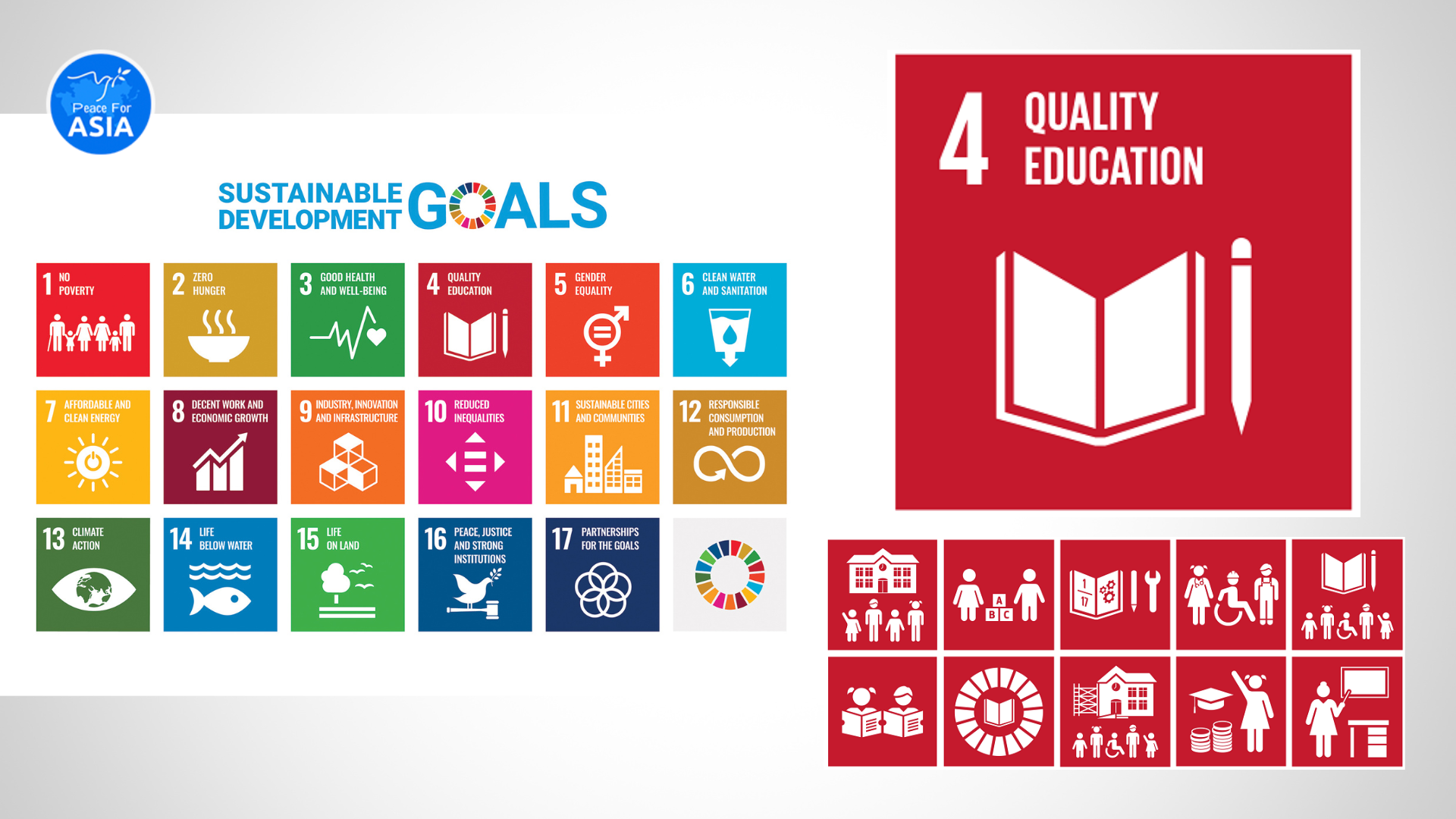Sustainable Development Goal 4 (SDG 4) stands as a beacon of hope, calling for inclusive and equitable quality education for all. In today’s digital age, the connection between SDG 4 and a contemporary issue is particularly pronounced: the transformation of education through technology and online learning platforms. This article explores the multifaceted aspects of SDG 4, delving into its relevance in an increasingly digital world.
SDG 4: Building Foundations for Progress
SDG 4’s core message is clear: education is a fundamental human right and a powerful tool for societal progress. The goal encompasses several key targets:
Universal Access to Education: SDG 4 aims to ensure that every child, regardless of gender, socioeconomic background, or geographical location, has access to quality education. This ambitious goal promotes the idea that education should be a right, not a privilege.
Quality Education: Quality is at the heart of SDG 4. It underscores the importance of not just providing education but also ensuring that it is of a high standard. This means well-trained teachers, adequate resources, and a conducive learning environment.
Equitable Access: The goal emphasizes the need for equitable access to education, focusing on marginalized and vulnerable populations, including persons with disabilities. Education should leave no one behind.
Lifelong Learning: Lifelong learning opportunities are key to personal and societal growth. SDG 4 encourages individuals to continue acquiring new skills and knowledge throughout their lives.
Contemporary Issue: The Digital Learning Revolution
The contemporary issue that underscores the relevance of SDG 4 is the digital learning revolution. In an era marked by rapid technological advancement and the global COVID-19 pandemic, online learning platforms have gained unprecedented prominence. Here’s how this transformation aligns with the goals of SDG 4:
Digital Inclusivity: The shift toward digital learning platforms presents an opportunity to expand educational access to remote and underserved areas. It has the potential to overcome geographical and infrastructural barriers, enabling individuals, including those with limited access to traditional education, to participate in learning opportunities (UNESCO, 2020).
Quality Education: Online learning platforms offer a myriad of educational resources, interactive tools, and personalized learning experiences. They have the potential to enhance the quality of education by providing access to a wealth of information and fostering innovative teaching methods (Jambhekar, 2021).
Lifelong Learning: Digital learning fosters a culture of lifelong learning. It allows individuals to acquire new skills and adapt to evolving job markets and technologies throughout their lives. This aligns with SDG 4’s goal of promoting continuous learning (European Commission, 2019).
Equitable Access: While digital learning has the potential to bridge educational disparities, it also highlights the digital divide. Addressing this issue is essential to ensure that all individuals, regardless of their socioeconomic status or geographic location, can benefit from digital education (UNESCO, 2020).
Education Resilience: The COVID-19 pandemic forced an abrupt shift to online learning, revealing the vulnerability of traditional education systems. This crisis underscores the importance of flexible and adaptive educational systems, aligning with SDG 4’s focus on resilient education (UNESCO, 2021).
Digital Learning in Action: Case Studies
To better understand how digital learning is impacting education and advancing SDG 4, let’s explore a few notable case studies:
Khan Academy: Khan Academy, a non-profit organization, offers a vast library of educational videos and interactive exercises. It has revolutionized the way students access and engage with educational content, making it a powerful tool for quality education and lifelong learning.
Coursera: Online platforms like Coursera provide access to courses from universities and institutions worldwide. This democratizes education, enabling individuals to acquire new skills or even complete degrees without the need for physical attendance.
Virtual Reality (VR) in Education: VR technology is increasingly being used in education to create immersive learning experiences. Students can explore historical sites, conduct virtual science experiments, and gain hands-on experience, all from the comfort of their classrooms or homes.
Open Educational Resources (OER): OER, such as open textbooks and online learning materials, are freely available to students and educators. These resources reduce the cost of education, improve access to quality content, and align with the goal of equitable access to education.
MOOCs (Massive Open Online Courses): MOOCs have gained popularity for their ability to reach a global audience. Institutions like Harvard, MIT, and Stanford offer free courses, democratizing access to high-quality education.
Conclusion: A Digital Path Forward for SDG 4
Sustainable Development Goal 4 provides a robust framework for addressing the challenges and opportunities presented by the digital learning revolution. To effectively navigate this transformation, it is essential to:
Bridge the Digital Divide to ensure equitable access to online education for all, addressing disparities in internet access and digital literacy while enhancing digital literacy to equip learners with essential skills for the digital age. Moreover, it would be necessary to invest in teacher training with training programs that prepare educators to adapt to digital learning environments effectively.
Finally, it is important to promote inclusive and flexible learning with digital platforms that can be customized to cater to diverse learning needs, fostering inclusivity and accommodating different learning styles.
By embracing the digitalization of education within the framework of SDG 4, we can harness the potential of technology to provide inclusive, equitable, and quality education for all, thereby advancing societal progress in the digital age.
References:
UNESCO. (2020). Education in a post-COVID world: Nine ideas for public action. Retrieved from https://en.unesco.org/news/education-post-covid-world-nine-ideas-public-action
Jambhekar, A. (2021). The Impact of Digital Transformation on the Future of Education. Retrieved from https://www.brookings.edu/research/the-impact-of-digital-transformation-on-the-future-of-education/
European Commission. (2019). Digital Education Action Plan. Retrieved from https://ec.europa.eu/education/policies/digital-education-action-plan_en
UNESCO. (2021). Education: From disruption to recovery. Retrieved from https://unesdoc.unesco.org/ark:/48223/pf0000374828

